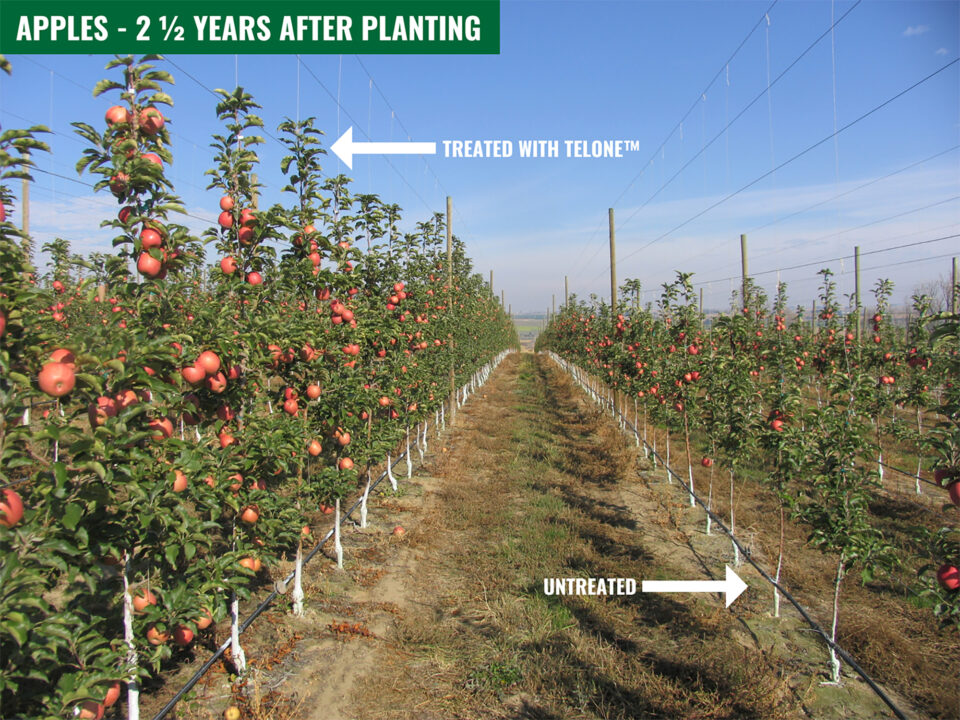5 Questions With Rick Kraus Of Valent U.S.A.

American/Western Fruit Grower recently talked with Rick Kraus, Valent U.S.A. Corp. brand manager, and Curtis Rainbolt, a BASF technical service representative. The discussion focused on topics such as grower needs and resistance issues. What follows are five questions we asked of Kraus and Rainbolt and their responses.
Q: What are the key attributes your company looks for when developing fungicides for fruits and vegetables, and how do those attributes relate to grower needs?
KRAUS: We try to bring something new and novel to the industry that has a different mode of action. The reason why that is so important is that it is necessary to assist growers with overall resistance management. Over time, there has been continuous exposure to older chemistries and they have started to slip in their overall performance. The other thing we try to do, as we go out into the marketplace, is to talk about stewardship related to the use of all materials. That really relates to making sure growers use the right fungicide for the right reasons.
RAINBOLT: There are two key attributes. No. 1, performance. No. 2, ideally a new mode of action or bringing a current mode of action into a new crop. Improved performance allows the grower to maximize the potential yield and quality of their crop. Bringing a new mode of action to a crop allows the grower to effectively practice resistance management.
Q:What are growers saying is most important in disease control?
RAINBOLT: The most important thing to the grower is having fungicides that perform at a high level and consistently deliver a return on investment. In order to maintain performance over the long term, it is important to practice resistance management by rotating fungicide modes of action. If you relied on just one mode of action, there would eventually be a problem with resistance. That’s why we just brought Vivando (metrafenone) to the grape market. It has a new mode of action.
KRAUS: For apples or pome fruit in the Eastern part of the U.S., the most important disease to control is apple scab. Apple scab is a disease that either growers do a good job controlling, which in turn brings a premium price for those apples in the fresh market environment, or if they do a poor job, obviously that creates a scab situation and decreases the potential income of the grower.
When it comes to stone fruit, brown rot is the biggest disease growers are concerned with. With brown rot it is the timing of the applications but also the situation as it relates to the weather conditions.
Q: Because resistance is such an issue, how can you stop or discourage growers from over-using a new, effective product?
KRAUS: It literally starts at the writing of our label. We have language on our label referring to what is the best approach to manage resistance. We also reinforce that with our advertising. We try to address resistance in our informational sheets, as well.
RAINBOLT: The best way is to offer multiple tools that are effective. If a grower is in a tough situation and only has one effective fungicide, they may be forced to repeatedly use the product in order to save their crop. One important part of practicing resistance management is to understand that different trade names don’t necessarily mean a different mode of action. When developing a resistance management plan, it’s important to use fungicides that have different FRAC (Fungicide Resistance Action Committee) codes.
Q:What types of products do you have coming down the pike?
RAINBOLT: Vivando fungicide was just registered for powdery mildew control in grapes in California, and BASF is anticipating registration in other grape growing states soon. In the near future, BASF hopes to bring Xemium fungicide into both fruit and vegetable crops. It’s a new chemistry that will bring a higher level of performance to growers.
KRAUS: In the next two or four years we hope to have three or four new molecules coming out, one of which is a brand new novel mode of action. The others have a mode of action or are in a class of chemistry that already exists in the marketplace.
Q: Where do you see the disease control segment of the crop protection industry headed?
KRAUS: For growers, the biggest things for them include using maximum rates, shortening the spray interval, and making sure the equipment they are using to apply these fungicides is in very good operating order. The other thing we talk about is tank mixtures and premixtures that contain two chemistries that are of different modes of action. So if resistance is an issue on a specific disease, the second material in that mixture will actually control the resistance isolate.
RAINBOLT: It’s very positive. Our company is working hard to bring new products to fruit growers. Growers can expect innovations from BASF in the future; it’s a real focus for us.










